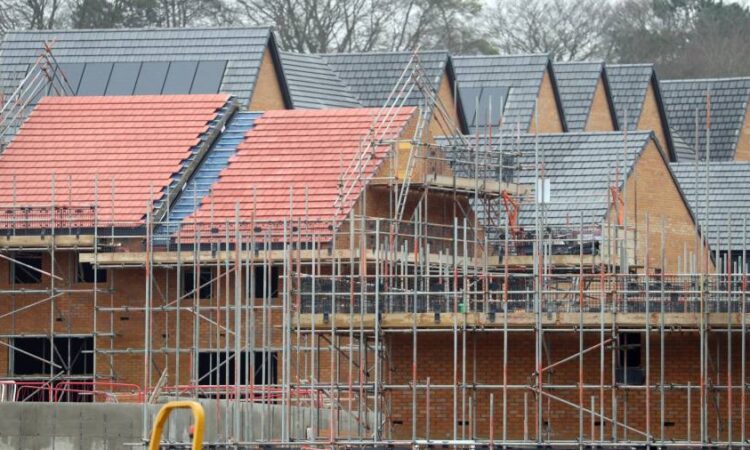
UK construction activity picked up in April, data published on Friday showed, adding to evidence that the economy improved last month even as the number of new businesses hit a record low.
The S&P Global/Cips UK construction purchasing managers’ index, a measure of the health of the industry, rose to 51.1 in April, from 50.7 in March. A reading above 50 indicates a majority of businesses reporting an expansion.
Tim Moore, economics director at S&P Global Market Intelligence, said the construction sector had “stretched out its current phase of expansion to three months in April, signalling a modest rebound from the downturn seen at the turn of the year”.
On Thursday, the same index covering the services sector rose more than initially estimated for April and to the highest level in 12 months.
Martin Beck, chief economic adviser to the EY Item Club, a consultancy, said the rise in the construction and services PMIs suggested the economy was “turning a corner”. While strikes and the cost of living crisis continued to be a drag on growth, he added, the data pointed to an improvement in the economy’s underlying performance.

Growth in the construction sector last month was supported by a decline in supply chain disruption, which eased to the greatest extent since September 2009. The fall helped reduce input price pressures, with the rate of cost inflation at its lowest level for almost two and a half years, according to Friday’s data.
The expansion in activity, driven by commercial building, was helped by stabilising domestic economic conditions and a gradual rebound in business confidence. Civil engineering activity also picked up in April, supported by resilient infrastructure projects.
In contrast, house building was by far the weakest-performing segment in April, reporting the steepest rate of decline in almost three years.
Moore said the drop was explained by “a considerable headwind from elevated mortgage rates and weak demand”, adding that although there had been some signs of a recent stabilisation in market conditions, it had “yet to feed through to construction activity”.
Separate figures released on Friday by the Office for National Statistics reported a fall in UK business creation.
According to the agency, about 79,000 businesses were set up in the first three months of 2023, down 22 per cent from the same period in 2022 and the lowest level for the first quarter since data collection began in 2017.

The figures, which cover businesses that are VAT-registered or employ staff and pay via PAYE, excluding sole traders and the self-employed, showed a decline in all 16 main industrial groups in the first quarter compared with the same period last year
The transport and storage sector registered the biggest drop, with the number of new companies down by 5,700, or 52 per cent, compared with the first quarter of 2022. The ONS said the fall in the sector over the past four quarters was in part explained by its surge in growth at the peak of the pandemic.
Craig Beaumont, chief of external affairs at the Federation of Small Businesses, a trade body, said the figures laid bare the “legacy of two years of Covid, one year of an energy crisis and the economic turmoil we’ve had”, and that many entrepreneurs were waiting for more stable conditions.






